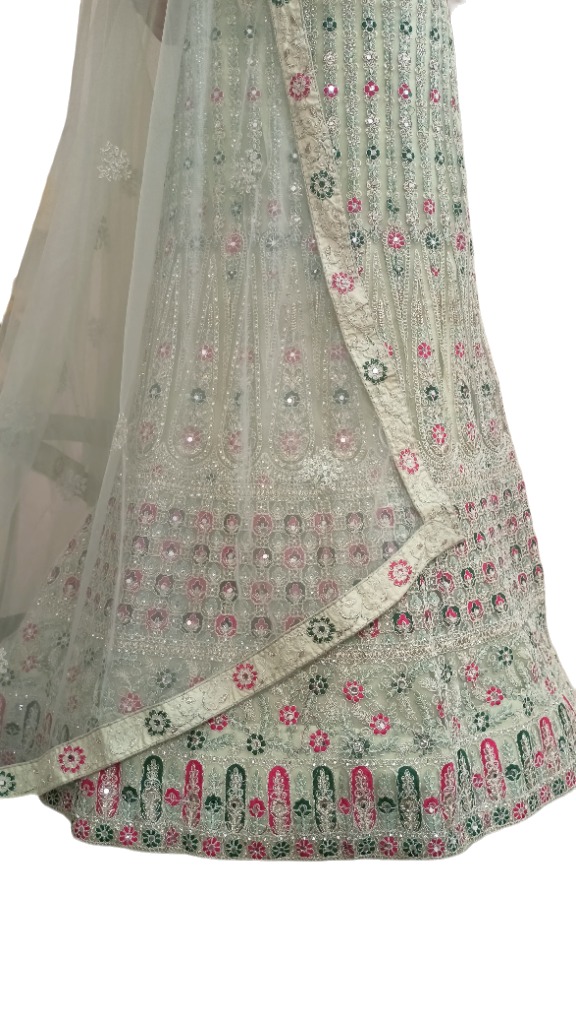पहचान को परिभाषित करें। पहचान के सिद्धांतों पर चर्चा करें। BPCG-172
पहचान वे विशेषताएं, विश्वास, मूल्य, अनुभव और संलग्नताएं हैं जो एक व्यक्ति या समूह को अन्यों से अलग और पहचानने योग्य बनाती हैं। यह एक बहुपक्षीय अवधारणा है जो हमारे अपने को कैसे प्रतीत करते हैं और दूसरों को हमारे प्रति योग्य कैसे प्रतीत करते हैं।पहचान स्थिर नहीं है; यह निरंतर विकसित हो रही है और संसार में रहने वाले विभिन्न आंतरिक और बाह्य कारकों जैसे संस्कृति, समाज, परिवार, व्यक्तिगत अनुभव और व्यक्तिगत चयन के प्रभाव में है।
पहचान को विभिन्न स्तरों पर समझा जा सकता है:
- व्यक्तिगतपहचान: यह एक व्यक्ति की आत्म-अनुभूति और व्यक्ति के रूप में उन्हें परिभाषित करने वाली विशेषताओं के समूह से संबंधित है। व्यक्तिगतपहचान में व्यक्तित्व गुण, रुचियां और जीवन के अनुभव शामिल होते हैं।
- सामाजिकपहचान: सामाजिकपहचान एक व्यक्ति के समूह से संबंध की उत्पत्ति से उत्पन्न होती है, जैसे जाति, रास, धर्म, राष्ट्रीयता, लिंग या सामाजिक वर्ग। लोग अपनी सामाजिकपहचान से एक समूह का अंग होने पर अपने को ज़रूरतमंद समझते हैं और स्वाभिमान प्राप्त करते हैं।
- समूहिकपहचान: समूहिकपहचान एक विशेष समूह, समुदाय या राष्ट्र के सदस्यों में साझा संबंध की भावना और समान विशेषताओं से संबंधित होती है। इसमें साझा इतिहास, संस्कृति, भाषा और मूल्य होते हैं जो व्यक्तियों को एक साथ बाँधते हैं।
पहचान के सिद्धांत:
पहचानके निर्माण और विकास को समझने के लिए कई सिद्धांत और दृष्टिकोण प्रस्तावित किए गए हैं। चलिए कुछ प्रमुख सिद्धांतों पर चर्चा करें:
- पहचानके मनोवैज्ञानिक सिद्धांत (एरिक एरिकसन): एरिकसन के सिद्धांत में कहा गया है कि पहचान विकास जीवनकाल के दौरान एक क्रम में होता है। पहचान निर्माण के लिए सबसे महत्वपूर्ण चरण किशोरावस्था है। पहचान के समस्या का सफल समाधान एक मजबूत आत्मसम्मान और एक सार्थक पहचान का विकास करता है। इस समस्या को समाधान नहीं कर पाने की स्थिति में, पहचान के अभिकल्प के रूप में व्यक्ति में पहचान भ्रम हो सकता है और कमजोर आत्मसम्मान हो सकता है।
- सामाजिकपहचान सिद्धांत (हेंरी ताजफेल और जॉन टर्नर): सामाजिक पहचान सिद्धांत एक व्यक्ति के स्व-अवधारणा को आकार देने में समूह सदस्यता के योगदान की महत्वपूर्णता पर जोर देता है। इससे स्पष्ट होता है कि लोग खुद को और दूसरों को विभिन्न सामाजिक समूहों में वर्गीकरण करते हैं। वे अपनी समूह से सकारात्मक तुलना के माध्यम से आत्मसम्मान प्राप्त करते हैं और अपने समूह के प्रति पूर्वाग्रह दिखा सकते हैं ताकि वे अपनी सामाजिक पहचान को बढ़ा सकें।
- पहचानसिद्धांत (पीटर जे बर्क और टिमोथी जे ओवन्स): पहचान सिद्धांत प्रस्तावित करता है कि एक व्यक्ति की पहचान विभिन्न सामाजिक संदर्भों में उनकी भूमिका पहचानों द्वारा आकार दी जाती है। इन भूमिकाओं में व्यावसायिक, संबंध, और समूह सदस्यता जैसे भूमिकाएँ शामिल हो सकती हैं। सिद्धांत सुझाव देता है कि लोग अपनी भूमिका पहचानों के बीच संगतता बनाए रखने का प्रयास करते हैं, और किसी भी भूमिका विपरीतता इसे पहचान संघर्ष में ले सकती है।
- प्रतीकात्मकप्रभाववाद (जॉर्ज हर्बर्ट मीड): यह सिद्धांत पहचान के निर्माण में संचार और अनुभव की भूमिका को उजागर करता है। मीड के अनुसार, व्यक्ति सामाजिक संवादों के माध्यम से अपनी आत्म-समझ का विकास करता है, दूसरों के परिप्रेक्ष्य (आईना) को ध्यान में रखते हुए और उन्हें प्रतिक्रियाएं प्राप्त करते हुए।
- सांस्कृतिकपहचान सिद्धांत (हेजल मार्कस और शिनोबू किटायामा): यह सिद्धांत पहचान के निर्माण पर संस्कृति के प्रभाव को ध्यान में रखता है। यह सुझाव देता है कि विभिन्न संस्कृतियों से लोग अलग-अलग आत्ममॉडल हो सकते हैं, जिससे वे अपने को और दूसरों को कैसे प्रतीत करते हैं और किस प्रकार से वे अपनी पहचान को निर्माण करते हैं।
- इंटरसेक्शनैलिटी (किंबरले क्रेंशॉ): इंटरसेक्शनैलिटी स्वीकार करती है कि एक व्यक्ति की पहचान कई सामाजिक वर्गों के अंतरविरोध में होती है, जैसे जाति, लिंग, वर्ग, और यौनता। यह सिद्धांत उजागर करता है कि इन अंतरविरोधी पहचानों के क्रम में विशेष अनुभवों के कारण लोग विशेषाधिकार या भेदभाव के अनुभव कर सकते हैं।
- कथानक पहचानसिद्धांत (डैन पी मैकडैम्स): यह सिद्धांत व्यक्तिगत कहानियों और कथाओं के रोल को पहचान निर्माण में अहम भूमिका देता है। लोग एक सार्थक जीवन कहानी बनाते हैं जो उनके पश्चात्य अनुभवों और भविष्य की आकांक्षाओं को अर्थपूर्णता देती है, जिससे वे अपनी पहचान को निर्माण करते हैं।
- पोस्टमॉडर्न पहचानसिद्धांत: पोस्टमॉडर्न दृष्टिकोण संयुक्त, स्थिरपहचान के विचार को चुनौती देता है। इसके स्थान पर, यह सिद्धांत प्रस्तावित करता है कि पहचान विछिन्न, द्रव्यमान, और समाजशास्त्रीय रूप से निर्मित है। पोस्टमॉडर्निस्ट विचारधारा के अनुसार, पहचानशक्ति संरचनाओं और भाषा के प्रभाव में होती है, और यह स्थानीय पुनर्व्याख्यान के अधीन है और निरंतर पुनर्व्याख्यान का विषय है।
- पहचानविकास मॉडल (जेम्स मार्सिया): मार्सिया ने पहचान के विभिन्न जीवन क्षेत्रों (जैसे कर्म, विचारधारा, रिश्ते) में पक्षपात और खोज में समर्पण की उपस्थिति या अनुपस्थिति के आधार पर चारपहचान स्थितियों का प्रस्तावना किया। ये स्थितियांपहचान प्राप्ति, पहचानसंधारण,पहचान संविक्षेपण और विचारधारा हैं।
संक्षेप में, पहचानएक जटिल और गतिशील अवधारणा है जो व्यक्तिगत, सामाजिक और समूहिक पहलुओं को सम्मिलित करती है। यह व्यक्ति के व्यवहार, सामाजिक आचरण, और समाज की गतिविधियों को समझने, समाजिक संवाद को स्थायी बनाए रखने और समाज की गतियों के प्रति प्रभावी सामर्थ्य को समझने के लिए महत्वपूर्ण है।
IGNOU BPCG-172 NOTES
- जनसांख्यिकीय लाभांश के रूप में युवा
- आक्रामकता के सामाजिक शिक्षण सिद्धांत
- परस्पर निर्भरता के पारिवारिक मॉडल पर चर्चा करें।
- सामाजिक-सांस्कृतिक, आर्थिक और कानूनी पहलुओं के संदर्भ में युवाओं की अवधारणा को स्पष्ट करें।
- आक्रामक व्यवहार को प्रभावित करने वाले सामाजिक-सांस्कृतिक कारकों की व्याख्या करें।
- लिंग समाजीकरण और बदलती लिंग भूमिकाओं पर चर्चा करें। अपने परिवार और आस-पास में इसके दो उदाहरण दीजिए।
- पहचान को परिभाषित करें। पहचान के सिद्धांतों पर चर्चा करें।
- प्रेम का त्रिकोणीय सिद्धांत |
- किशोरावस्था के विकासात्मक कार्य






